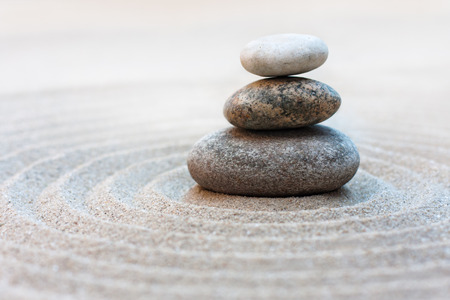1. Understanding Minimalism and Feng Shui
Exploring the Foundations
Minimalism and Feng Shui both offer unique approaches to creating harmonious living spaces, yet they originate from very different backgrounds. Let’s dive into the core principles of each philosophy and discover how they can complement one another in contemporary American homes.
What is Minimalism?
Minimalism is a design movement that focuses on simplicity, functionality, and the idea that less is more. It encourages us to declutter our spaces and lives, keeping only what is necessary and meaningful. This approach results in clean lines, open spaces, and a calm environment—an aesthetic that has become increasingly popular in modern American interiors.
Key Principles of Minimalism
| Principle | Description |
|---|---|
| Simplicity | Keep decor and furnishings simple, avoiding excess ornamentation. |
| Functionality | Choose items that serve a clear purpose. |
| Decluttering | Remove unnecessary objects to create open, airy spaces. |
| Intentional Living | Focus on quality over quantity—select items that truly matter. |
The Essence of Feng Shui
Feng Shui is an ancient Chinese practice centered around balancing energies (Qi) within a space to promote health, prosperity, and well-being. Unlike minimalism, which focuses on reducing visual noise, Feng Shui involves thoughtful placement of objects, colors, and elements to encourage positive energy flow.
Core Principles of Feng Shui
| Principle | Description |
|---|---|
| Qi Flow | Create pathways for energy to move smoothly throughout your home. |
| Five Elements | Balance wood, fire, earth, metal, and water through colors and materials. |
| Yin & Yang Balance | Blend soft (yin) and strong (yang) features for harmony. |
| Bagua Map | Use this energy map to align areas of your home with aspects of your life. |
Where Minimalism Meets Feng Shui in Modern America
The intersection of minimalism and Feng Shui creates living spaces that are not only visually appealing but also energetically balanced. In American homes today, this blend means decluttered rooms with intentional placement of furniture and decor—each item chosen for its function and its ability to support a healthy energy flow. Both philosophies encourage mindfulness about what we bring into our homes, making them especially relevant as we seek comfort and calm in our everyday environments.
2. Adapting Feng Shui Principles to Minimalist Design
Blending Energy Flow with Simplicity
Minimalist décor is all about keeping things simple, clean, and clutter-free. But how do you keep the positive energy flowing—like Feng Shui encourages—when you’re working with fewer objects and a streamlined look? The good news is, these two styles can work together beautifully in American homes. By focusing on intentional choices and open space, you can create a living area that feels both calm and full of good vibes.
Practical Ways to Integrate Feng Shui into Minimalist Spaces
1. Focus on Clear Pathways
One key Feng Shui principle is letting energy (or “chi”) move easily through your home. In minimalist design, this means arranging furniture so there’s plenty of room to walk around. Avoid blocking doorways or windows with large items. This not only makes your space look bigger but also helps positive energy circulate.
2. Choose Meaningful Décor
Every item in a minimalist home should serve a purpose or bring joy. From a Feng Shui perspective, choose artwork, plants, or decorations that make you feel happy and relaxed. Skip anything that reminds you of stress or negative feelings.
3. Emphasize Natural Light and Air
Bright, airy spaces are both minimalist and high in good Feng Shui energy. Open curtains during the day, use light colors on walls, and include mirrors to reflect light around the room. Add houseplants like snake plants or pothos for a fresh touch—they’re easy to care for and help purify the air.
4. Use Balanced Colors
Minimalism often favors neutral shades like white, beige, or gray. You can add subtle touches of color based on Feng Shui elements to balance the energy:
| Feng Shui Element | Color | Purpose |
|---|---|---|
| Wood | Green | Growth & Vitality |
| Fire | Red/Orange | Passion & Motivation |
| Earth | Yellow/Brown | Stability & Comfort |
| Metal | White/Gray | Clarity & Focus |
| Water | Blue/Black | Relaxation & Wisdom |
5. Organize Storage Smartly
A tidy home supports positive energy flow. Use storage solutions like built-in shelves, hidden cabinets, or under-bed drawers to keep clutter out of sight but easy to access.
Tailoring Feng Shui Minimalism for American Lifestyles
The American way of life often involves busy schedules and multi-purpose rooms. To keep things practical: dedicate zones for work, relaxation, and family time; use multipurpose furniture like fold-out desks or sofa beds; personalize your space with family photos or souvenirs—but only display what truly brings you joy and motivation.
Your Harmonious Minimalist Home Awaits
You don’t have to choose between minimalism and good energy flow—they can go hand in hand! With a few thoughtful adjustments inspired by both Feng Shui and modern simplicity, your home can become a peaceful retreat that fits perfectly with your everyday life.
![]()
3. Decluttering: The Shared Foundation
Why Decluttering Matters in Minimalism and Feng Shui
Decluttering is at the heart of both minimalism and Feng Shui, making it a crucial step for anyone aiming to create a harmonious, contemporary living space. In minimalism, decluttering helps you focus on what truly matters by reducing distractions and excess. For Feng Shui, removing clutter allows energy (or “chi”) to flow smoothly, creating a balanced environment that supports well-being.
Benefits of a Clutter-Free Home
| Minimalism | Feng Shui |
|---|---|
| Reduces stress and visual chaos | Promotes positive energy flow |
| Makes cleaning easier | Improves air quality and health |
| Highlights your favorite items | Encourages harmony and balance |
| Saves time searching for things | Invites good luck and prosperity |
Practical Tips for Decluttering Your Space
1. Start Small and Stay Consistent
Tackle one room or area at a time—try starting with your entryway, kitchen counters, or coffee table. Even 10 minutes a day can make a big difference over time.
2. Use the “Keep, Donate, Toss” Method
Create three piles when organizing: one for items you want to keep, one for donations, and one for things to throw away. This makes decisions easier and helps you stay organized.
3. Clear Pathways and Entry Points
In Feng Shui, blocked doorways or hallways restrict energy flow. In American homes, keeping these areas open also gives your home a more welcoming feel.
4. Limit Decorative Items
Select a few meaningful pieces instead of overcrowding shelves or tables. Both minimalism and Feng Shui value intentional choices that reflect your personality and support positive vibes.
5. Organize with Purposeful Storage Solutions
Invest in simple storage bins, baskets, or furniture with built-in storage to keep everyday items out of sight but still accessible.
A Harmonious Living Space is Within Reach
Combining the principles of minimalism and Feng Shui starts with decluttering. By keeping your living space tidy and intentional, you can enjoy both peace of mind and an environment that feels energetically balanced.
4. Choosing and Arranging Furniture for Harmony
Creating a balanced home with both minimalism and Feng Shui in mind starts with smart furniture choices and thoughtful arrangement. Here’s how American homeowners can select pieces that enhance both comfort and positive energy while maintaining a clean, stylish look.
Pick Functional, Stylish Pieces
When shopping for furniture, focus on items that are both practical and beautiful. Go for clean lines, neutral colors, and natural materials like wood or cotton. Popular American brands such as West Elm, Crate & Barrel, or Pottery Barn offer plenty of minimalist options that blend well with modern Feng Shui principles.
Consider the Five Elements
Feng Shui emphasizes balancing five elements: wood, fire, earth, metal, and water. You can introduce these through furniture material or accents. For example:
| Element | How to Add It | Furniture/Accessory Examples |
|---|---|---|
| Wood | Natural wooden furniture | Oak coffee table, bamboo shelving |
| Fire | Pops of red or orange color | Cushions, artwork with warm tones |
| Earth | Ceramic or stone décor | Clay vases, granite countertops |
| Metal | Sleek metal finishes | Brass lamps, stainless steel chairs |
| Water | Glass surfaces or blue accents | Glass coffee table, navy blue throw rug |
Arrange for Flow and Comfort
The way you place your furniture impacts the “chi,” or energy flow, in your home. Keep walkways open—avoid blocking doorways or windows with large pieces like sectionals or bookshelves. In the living room, arrange seating so everyone faces each other naturally; this encourages connection and harmony.
Sofa and Bed Placement Tips
| Room | Main Furniture Piece | Ideal Placement (Feng Shui & Minimalism) |
|---|---|---|
| Living Room | Sofa | Back against a solid wall; clear view of entryway; avoid floating in the middle of the room unless space allows it comfortably. |
| Bedroom | Bed | Headboard against a wall; not directly in line with the door; leave space on both sides if possible for balance. |
Edit and Simplify Your Space
Avoid overcrowding rooms with too many furnishings. Stick to what you need and love—a couple of accent chairs instead of a bulky sectional, or a streamlined dining set rather than an oversized table. Use storage ottomans from Target or IKEA to keep clutter out of sight and maintain that minimalist feel.
Your Quick Checklist for Harmonious Furniture Choices:
- Select multipurpose pieces (like sleeper sofas or extendable tables).
- Add soft textiles for coziness—think area rugs from Ruggable or throws from Anthropologie.
- Keep cords hidden and surfaces tidy to support good energy flow.
- Mimic nature with plants or organic shapes to soften straight lines.
By mixing minimalist sensibilities with Feng Shui wisdom, your home will feel peaceful, inviting, and uniquely yours.
5. Personalizing Spaces While Maintaining Balance
Creating a home that feels uniquely yours is important, but when blending minimalism and Feng Shui, it’s essential to personalize thoughtfully. This way, you can enjoy a space that reflects your style without disrupting the calm energy and clean aesthetics that both approaches value.
Adding Personal Touches Without Overcrowding
Minimalism encourages “less is more,” while Feng Shui focuses on energy flow. Choose a few meaningful items—like family photos, travel souvenirs, or heirloom pieces—to display intentionally. Grouping items in odd numbers (such as three or five) can create visual interest and harmony. Avoid cluttered shelves and overcrowded surfaces, which block positive chi (energy) and make spaces feel busy.
Personalization Ideas That Support Harmony
| Element | Minimalist Approach | Feng Shui Consideration |
|---|---|---|
| Artwork | One large statement piece or a small curated collection | Choose art with uplifting themes and calming colors; hang at eye level for balanced energy |
| Textiles | Solid colors or subtle patterns for rugs, pillows, and throws | Select natural fabrics; use soft textures to enhance comfort and invite good chi |
| Mementos | Display only favorites in dedicated spots like a shelf or entryway table | Avoid sharp edges; place sentimental items where you see them daily to attract positive energy |
| Plants | Keep one or two healthy plants per room | Use round-leaved plants for gentle energy; avoid spiky varieties in social areas |
Selecting Color Palettes That Reflect You and Promote Flow
Both minimalism and Feng Shui favor calming, neutral colors as a base—think whites, beiges, soft grays, and muted earth tones. To personalize, add accent colors that resonate with you but keep them in moderation. In Feng Shui, each color relates to an element and mood: blues and greens for tranquility (Wood), reds for passion (Fire), yellows for warmth (Earth), whites for clarity (Metal), and blacks/blues for depth (Water). Choose one or two accent shades that support your goals while keeping the overall look simple.
Color Palette Inspiration Table
| Main Color(s) | Accent Color(s) | Mood/Element Supported | Tips for Use |
|---|---|---|---|
| Soft White & Light Gray | Navy Blue or Forest Green | Calm, Growth (Wood/Water) | Add with throw pillows or wall art for subtle personality boost. |
| Warm Beige & Sand | Terracotta or Olive Green | Stability, Connection (Earth/Wood) | Incorporate through planters or ceramics. |
| Pale Taupe & Cream | Dusty Rose or Gold Accents | Comfort, Prosperity (Earth/Metal) | Add via candle holders or small decor pieces. |
| Crisp White & Charcoal Gray | Sage Green or Sky Blue | Clarity, Tranquility (Metal/Wood) | Bedding or vases are great ways to introduce these hues. |
Selecting Décor Elements That Blend Functionality and Beauty
Pare down decorative accessories so each serves a purpose. Mirrors are great for reflecting light and expanding space—just place them to avoid facing beds directly. Storage baskets keep things tidy and can double as stylish accents if made from natural fibers like bamboo or seagrass. Lighting should be layered: mix overhead lights with floor lamps and candles to create warmth without excess clutter.
Tips for Balanced Personalization:
- Edit regularly—remove anything that no longer brings joy or fits the current vibe.
- Create negative space between objects to allow energy to flow freely.
- If adding bold personal statements (like a vibrant rug), balance with understated furniture and accessories elsewhere in the room.
This approach helps you create living spaces that are both meaningful and harmonious—true to your individuality while honoring the peaceful spirit of minimalism and Feng Shui.


